Upanayanam Ceremony | Brahmopadesham | Janoi | Janeu | Poonal
Pureprayer provides you with Best Pandits, Purohits, Panthulu or Tamil Prohithar for the ceremony of Upanayanam / Janieu / Poonool / Brahmopadesham.
Upanayanam – Poonal is an important stage among the sixteen procedures observed in Hindu religion, known as Shodasha Samskars. Traditionally, Upanayanam is the Samskar performed to the child before he is sent to study in the Gurukul under ‘Brahmacharya’. You will perform Upanayanam Vidhi to your child and initiate him with Brahmopadesham, thereby making him eligible to study the Vedic Scriptures.
The word Upanayanam means, bring near. Vatu sits close to his father or maternal uncle to undergo Brahmopadesham. Vatu is called a Dvija after Brahmopadesham, meaning twice born, as he is given the Upadesham of Gayitri (Sanskrit: गायत्री).
Traditionally, Upanayanam or Janieu is performed at the tender age of eight years and Muhurtam is fixed in Vasant Ritu. While Upanayanam, Brahmopadesham or Janieu is performed in your residence, you can also choose to perform Upanayanam, Brahmopadesham or Janieu in Kshetra, as they are believed to bring in special benefits.
Pureprayer can provide Bengali Pandit, Bihari Pandit, Hindi Pandit, Marathi Guruji or Oriya (Odiya) Pandit for performing Janieu ceremony in North Indian style. We also provide Kannada Pujari, Malayalam Pujari, Tamil Iyengar, Tamil Vadhyar or Telugu Purohit to perform Upanayanam in South Indian style.
Why is it important to undergo Upanayanam?
Upanayanam, Poonal or Janieu was essential like a passport in the olden days, before seeking a formal education. More often than not, education used to take place in a Gurukulam. The boy had to be prepared for the disciplined lifestyle in the place of education.
He had to seek food by Bhiksha, a process of collecting food for the Guru and himself. He had to perform the rituals of Sandhyavandanam and Agnihotra under Guru’s tutelage. Along with these rituals, he would get to learn the Shastras, grammar, and other useful life-skills.
Upanayanam – Poonal or Janeu ceremony is performed for the boy, when he is of the age to understand the commands of Guru and follow them. After the ceremony, the boy would be under the guidance of the Guru. We offer the educational fee as prescribed by Guru. He would offer a set of clothes, Dhoti and Uttareeyam along with a staff of Palasha wood to the student and admit him to his Gurukulam.
Upanayanam
The most important aspect of Upanayanam – Poonal ceremony is wearing the sacred thread as per our Hindu Sanatan Dharma tradition.
Yajjopavitam
Puranas mention that, three strands of sacred thread ‘Yajjopavitam’ represents Brahma, Vishnu and Maheshwara. It is also believed to represent three forms of Shakti namely; Mahakaali, Maha Saraswati and Maha Lakshmi. It is believed to represent the Naadis like Ida, Pingala and Sushumna in our body through which the Kundalini is said to manifest as Pranic energy leading to consciousness. In the physical world, it is said to represent the oath to sacrifice ego, anger and selfishness. The sacred thread known by names like Janieu or Janoi, Janjam, Poita and many more, is also said to represent one’s debts to the gods, the rishis and one’s ancestors.
The boy undergoing Upanayanam or Bahmopadesham is called Vatu and is given a small wooden staff of Palash (Kannada: ಮುತ್ತುಗ). This staff is an inseparable companion with the boy until his education is complete. It symbolizes the need to be in control of his senses.
Vatu is made to wear a girdle of Mounji grass called Mekhala or Maunjibandha, which further emphasizes the self-control. The word Munji for Upanayanam has been from this procedure.
A small piece of deer-skin is attached to the sacred thread, which is known as Krishnajina which is required for the purposes of Agnihotram. As the boy has to lead an austere life at the Gurukulam, he is given a very simple set of clothes that includes a Dhoti, a cover cloth called Uttareeyam and innerwear called Kaupeena.
Frequently Asked Question section for Upanayanam
What is Upanayanam?
The ancient ceremony of Upanayanam is Sacred thread ceremony. This ritual is performed to the boy child before the beginning of education.
Why is Upanayanam an important ceremony?
This ceremony symbolizes the boy ready to take religious responsibilities. The significance of Upanayanam lies in the preparedness of the boy for Brahmacharya, Bhikshatan, Guru Seva and education resulting in enlightenment.
When can Upanayanam be performed?
Generally, when the boy is of age between 8 and 16 years, the parents perform the ceremony with the presence of experienced pandits and purohits. The suitable age varies according to the tradition. Also, the Muhurtham is decided after a proper examination of Janma-Patri (Horoscope or Birth Chart) by astrologer.
Can I perform Upanayanam at my home?
It is considered very auspicious to perform Upanayanam ceremony at home. However, due to the constraints of space in urban life, it becomes convenient to perform Upanayanam in Convention Halls, large temples and Teertha Kshetras.
What are the suggested Teertha Kshetras for Upanayanam?
Gokarna:
Gokarna Kshetra was the place where Lord Ganesha in the disguise of a small boy deceived the demon king Ravan from taking the Atmalinga of Lord Shiva.
Kashi:
Kashi is considered the seat of spiritual education and Moksha (Salvation). Performing Brahmopadesham or Janieu in Kashi Kshetra can become a memorable experience for a life time.
Udupi Kshetra
Udupi Kshetra is a beautiful city in Dakshina Kannada on the shores of Arabian Sea, famous for Lord Krishna that was consecrated by Dwaita proponent Madhwacharya. Performing the Brahmopadesham here, in this Teertha Kshetra of adorable ‘Kadegolu Krishna’ can be a right step in the beginning of spiritual practices.
Horanadu Sri Kshetra
Sri Annapurneshwari of Horanadu, situated on the banks of Bhadra River is a great Teertha Kshetra popular for the practices of care and feeding even before Darshan of the deity. Annapurna means, the one who feeds. Initiating the child into the spiritual practices in the middle of nature and in the divine presence of all-caring mother is both auspicious and can be a memorable experience.
Sringeri Kshetra
Sringeri Kshetra can be a perfect destination for the thread ceremony or Brahmopadesham. The Kshetra is highly auspicious due to the divine presence of Sharada Mata (mother who nourishes one and all), River Tunga and the lush greenery adding a healthy and beautiful ambience to the event. Benevolence and Ashirvadams of Jagadguru (Pontiff) is a great treasure.
Kamalashile
Kamalashile Kshetra is believed to have been mentioned in Sahyadri Kanda of the Skanda Purana. Durga Paramaeshwari temple in this Kshetra is said to be a very ancient. Performing sacred ceremonies, Pujas and Homas here are said to give amplified results as the Kshetra was a sacred ground sought by many sages and divine personalities.
What should I wear for Upanayanam?
Upanayanam – Poonal ceremony is a traditional ritual delineated in Gruhya Sootras and practiced for many centuries in India with traditional attire of Dhothi for men and sari for women.
What is the Upanayanam Vidhi?
Upanayanam – Poonal was a very important ceremony that was performed for five days or perhaps more. However, due to severe constraints of modern life, a simplified format of two or three day procedure may be considered. The traditional parts, like Vastradaan, Arati to the Vatu, Mangalsnan and other rituals have not been mentioned here for lack of space. You can call our support for further customisation needs. Some important steps have been mentioned here:
- Udaka Shanti
- Kalash Sthapana and Kalash Puja
- Upanayanam with Puja and Yajna
- Pancha Shikha Ceremony or Tonsure Ritual
- Visit to the Ashvattha Vriksha
- The Sacred Thread Wearing Ceremony
- Kumara Bhojan or Sumangali Bhojanam
- Gayatri Mantropadesham
- Agnihotram
- Bhiksha
- Imparting Basic Concepts and Principles of Vedic Knowledge
Pooja Samagri List for Upanayanam
The following is a list of items needed for Upanayanam Ceremony. These puja items are also available as part of the Puja bookings.
- Haridra (Turmeric powder-Haldi)
- Kumkum (Red vermillion or Sindoor)
- Kankanam for Nandi shashtram
- Basinga and head-gear
- Panchapatra-Arghya Patra-Uddharana set (At least 3 sets)
- Yajjopaveetam, Janieu or Poonool made of Gold or silver as per tradition
- Yajjopaveetam made of cotton as per tradition
- Dhoti and Uttareeyam
- Palash staff
- Incense sticks
- Camphor
- Sandal paste
- Betel leaves
- Betel nuts
- Coins
- Coconuts
- Flowers
- Floral garlands
- Homa Kund
- Peetham
- Two Vessels (Silver, Copper, Brass, or even earthen) – one for Kalash and another for the ritual
- Ringing bell
- Ghee lamps
- Oil lamps
- Cotton wicks
- Good to have
- Conch shell
- Volagam / Vaadyam / Musicians
Online Puja & Homam Service:
Pureprayer offers online homam and puja services for devotees who cannot be present in-person at the pooja location. We perform all poojas and homas at any of our network of pooja mandirs, Kshetras and Homa Kuteeras. Our qualified Vedic purohits will perform the pooja as per the prescribed procedures with a sankalpam. We can create a short video of the sankalpa along with the mantra chanting and sent to the devotee on WhatsApp. If the devotee prefers to remotely participate during the pooja or homam, we can connect with the purohits at pooja mandirs via a live video call using any of the video calling apps (WhatsApp, Zoom, Duo or Skype).
Pureprayer provides a complete guidance on the performance of the ‘Upanayanam’ (Thread Ceremony), our purohits are multi-lingual and can speak Tamil, Telugu, Kannada, Hindi, Marathi etc.
Our Upanayan Service Includes
- Consultation with Astrologer or Purohits in Identifying the ‘Muhurtham/Mahurat’ (auspicious date and time) for the ceremony
- Selection of a place or a Kshetra for the ceremony
- Selection of an appropriate purohit (Iyer, Iyengar, Madhwa, Smartha etc) for the ceremony
- All ‘Samagri’ (puja materials) along with other arrangements at the venue
- Includes ‘Dakshinas’ and ‘Dhanas’ required for the ceremony
- Event planning, decorations and catering (on request)


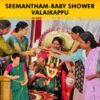
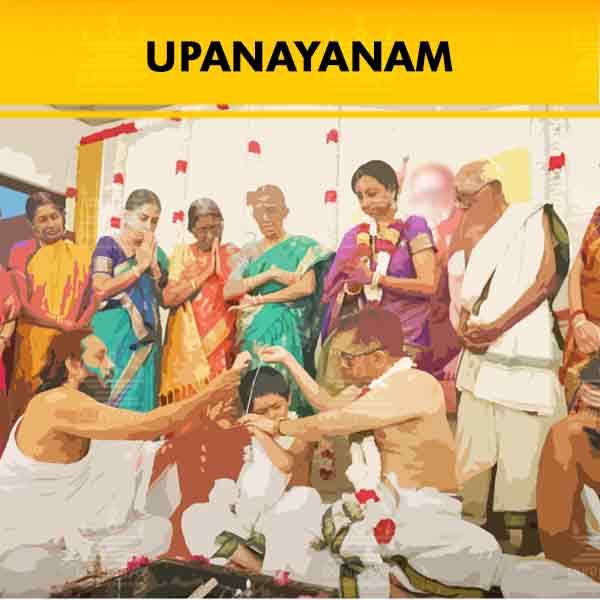



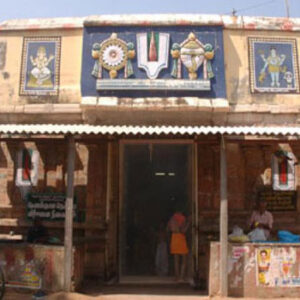
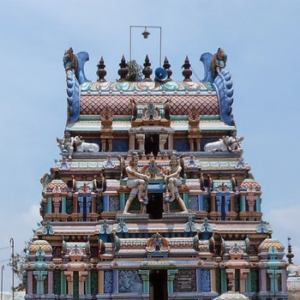
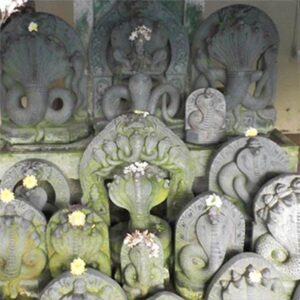
Reviews
There are no reviews yet.